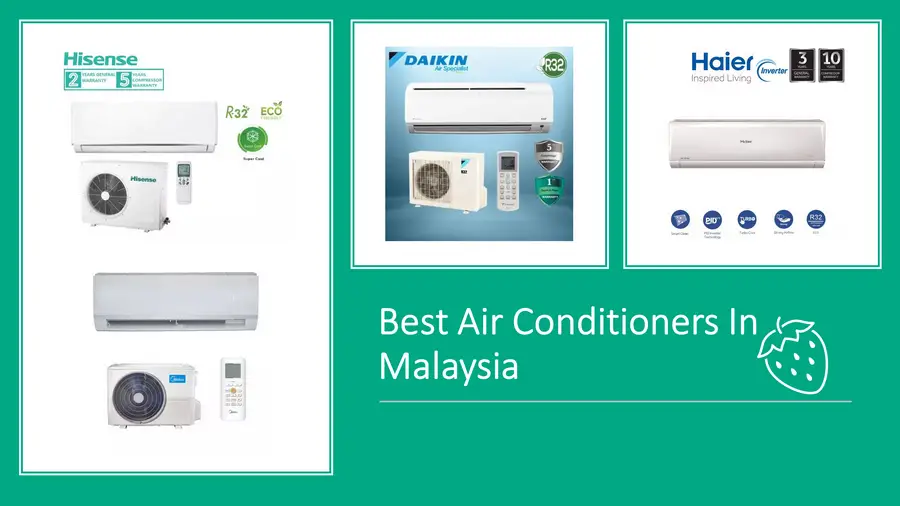
What is the best air conditioner in Malaysia?
What are the differences between the inverter and non-inverter air conditioners?
Should I use R32 or R401A refrigerant?
What factors do I need to consider before buying an air conditioner?
You will get all the answers here.
Take Note:
- Malaysia is Hot & Sunny! Don’t go outside without Sunscreen!
Don’t Miss Out These:
- Lazada Voucher RM15: Grab Here
- Shopee Voucher RM18: Grab Here
- Agoda Discount (Up to RM200 OFF): Grab Here
- Discover Great Deals: Handpicked Products of the Month
I spent hours to research and review over 20 models of air conditioners to come out with this list of top 5 best air conditioners in Malaysia.
Top 5 Best Air Conditioners in Malaysia
Here are the carefully picked top 5 best air conditioners in Malaysia that worth every ringgits.
- Midea MSXS-10CRDN8 Aircon – Best 1 HP Inverter Air Conditioner
- Haier HSU-10LPB21 Aircon – Best 1 HP Inverter Air Conditioner
- Hisense AN13DBG Aircon – Best 1.5 HP Non-Inverter Air Conditioner
- Midea MSXS-13CRDN8 Aircon – Best 1.5 HP Inverter Air Conditioner
- Hisense AI20KAGS Aircon – Best 2 HP Inverter Air Conditioner
Best Air Conditioner Brands in Malaysia
There are many air conditioner manufacturers in Malaysia, and here are the best air conditioner brands in Malaysia market:
- Daikin
- Midea
- Sharp
- Hisense
- Haier
- Samsung
- Panasonic
- York
- GREE
- Toshiba
- Mitsubishi Electric
- Hitachi
I believe you have seen more than 95% (if not all) of the top air conditioner brands above.
Top 5 Best Air Conditioners In Malaysia Review
Here are the reviews of each best air conditioner in Malaysia.
1.Midea MSXS-10CRDN8 Review – Best 1 HP Inverter Air Conditioner
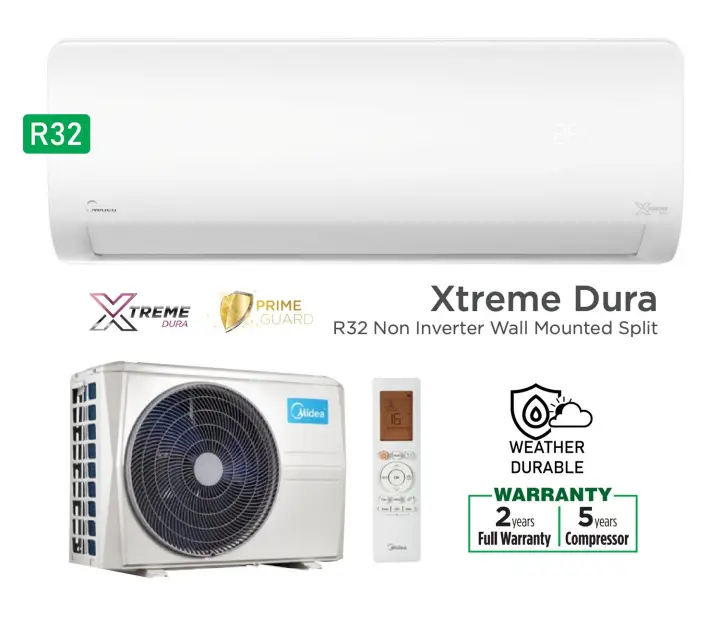
Features:
- 1.0 HP
- Inverter
- R32 refrigerant
- 9,200 BTU/H
- Eco Mode
- Air Magic (Super Ionizer)
- Flash Cooling
- Turbo mode
- Cold Catalyst Filter
The Midea MSXS-10CRDN8 is an affordable yet powerful 1 hp air conditioner for any household’s bedroom and small room.
It has a turbo mode to achieve the desired temperature in a shorter time, and the Cold Catalyst Filter eliminates harmful substances to produce refreshing and healthy air for you.
It is the best 1 hp inverter air conditioner in Malaysia for small rooms.
2. Haier HSU-10LPB21 Review – Best 1 HP Inverter Air Conditioner
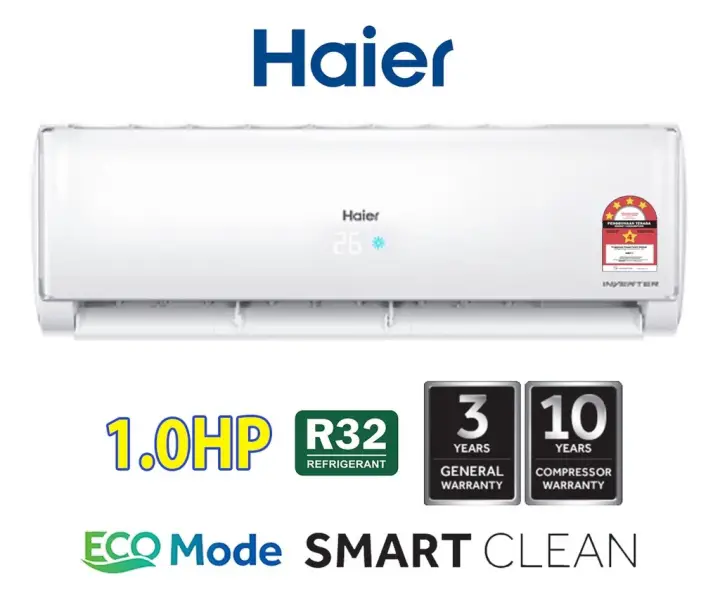
Features:
- 1.0 HP
- DC Inverter
- R32 refrigerant gas
- 9,500 BTU/H
- Smart Cleaning Technology
- Turbo mode
- Eco mode
The Haier HSU-10LPB21 is one of the best 1.0 hp air conditioner powered by dc inverter for greater energy efficiency and saving on electricity bills.
It has a smart clean technology to kill 99.9% of bacteria to produce clean and healthy air for your family.
With the turbo mode feature, you can cool down your room much faster.
3. Hisense AN13DBG Review – Best 1.5 HP Non-Inverter Air Conditioner
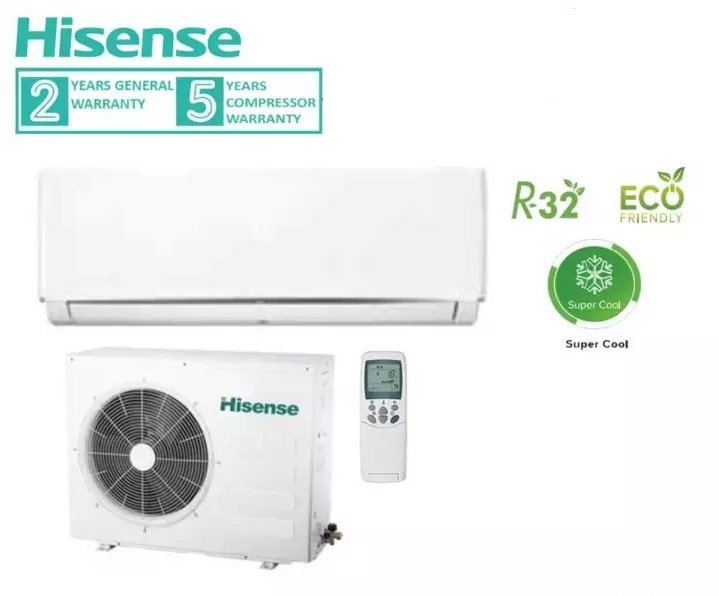
Features:
- 1.5 HP
- R32 refrigerant gas
- Non-Inverter
- 12,283 BTU/H
- Long-distance airflow
- Smart mode
The Hisense AN13DBG is the best 1.5 hp non-inverter air conditioner for small to medium rooms.
With smart mode, the sensor in the wireless remote control will detect the surrounding temperature and adjust the air conditioner to produce a more even temperature in the coverage area.
The long-distance airflow of up to 10m to cool your room faster and further from the aircon location.
4. Midea MSXS-13CRDN8 Review – Best 1.5 HP Inverter Air Conditioner
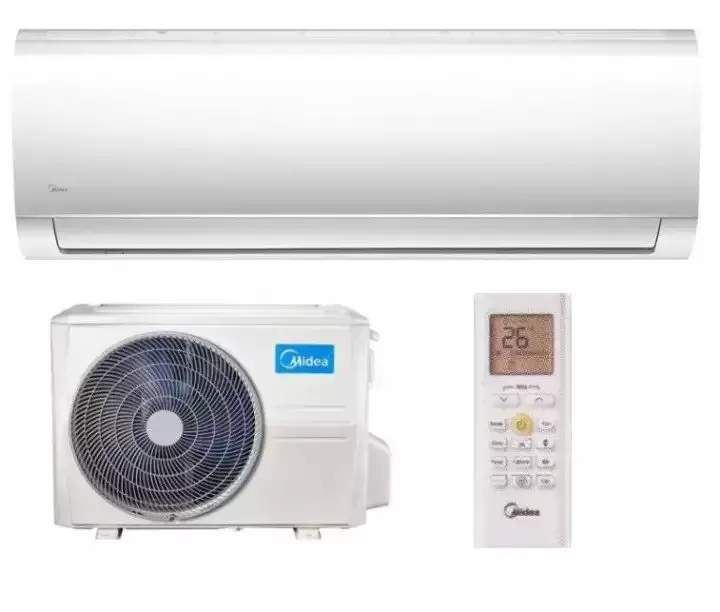
Features:
- 1.5 HP
- Inverter
- R32 refrigerant gas
- 12,000 BTU/H
- Super Cool, Eco-mode, Super Ionizer
- Triple Comfort High-Density Filter
- Cold Catalyst Filter 2-Way Draining
- Self-Cleaning
- Smart Control
The Midea MSAF-12CRDN8 is a features-packed 1.5 hp inverter air conditioner.
It has a lot of useful features like Follow Me, Sweet Dreams mode, refrigerant leakage detection, self-diagnosis, auto-protection, Three-Dimensional Airflow, Gear change, Self-cleaning, and more.
All these useful features and affordable price tag make it the best 1.5 hp inverter air conditioner for small to medium rooms.
5. Hisense R32 Inverter Aircond AI20KAGS Review – Best 2 HP Inverter Air Conditioner
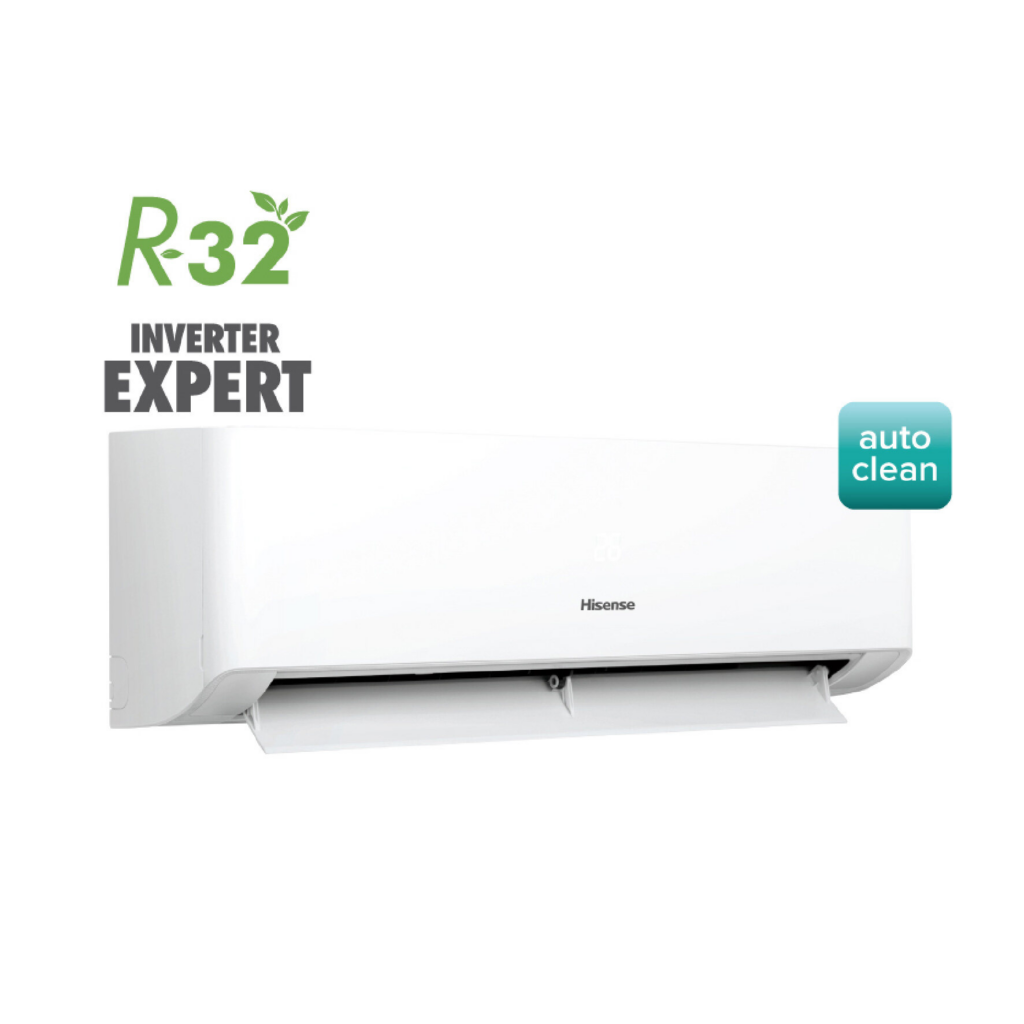
Features:
- 2.0 HP
- R32 refrigerant gas
- Inverter
- 17,500 BTU/H
- One Button Auto Clean
- Super quiet
- Multiple Purification Technology
The Hisense R32 Inverter Aircond AI20KAGS is the best 2.0 hp air conditioner for medium to large rooms.
It has a quieter operation to ensure minimal disturbance to you and your family when cooling the room.
It comes with the upgraded fan motor design for a better and faster-cooling result.
Also Read: Best Dryer Machines in Malaysia
What is an Air Conditioner?
The air conditioner is a system that replaces the warm air with the cooler air. This system uses the refrigeration cycle to cool down an enclosed space like home or office.
The air conditioning system cools down the air; then, this air is moved to the different areas of a building or a house by using the ventilators or air ducts. This system takes some input in the form of electrical energy, and it provides the cool air by using the second law of thermodynamics.
Air conditioners are mostly referred to as a split system because of the division of the system in two central portions.
One is the outdoor unit, which is the condenser. This condenser is placed outside the building in the open area. The condenser is responsible for taking the heat from inside to outside in the environment.
And the other part is called an indoor unit or evaporator. The indoor unit dehumidifies the warm air of the inside area to provide the cool air. And the warmth and heat are taken to the outdoor unit via refrigerating gas. This gas absorbs the heat from the inside. And the condenser throws the heat from the gas in the environment.
You can find another type of air conditioner with both of the units combined in a single place. This system is called a packaged system. It also works on the same principle as the split unit.
Why Do You Need an Air Conditioner?
The all year hot weather alone is enough to be the reason why you need air conditioners in your home.
Other than this, there are a few more benefits of having the best air conditioners in your home.
Decreased asthma favoring variables
The air conditioning system has filters that attract the dust particles, dust mites, and other airborne allergens. The air conditioner also decreases the humidity level in your building. And you get clean, cool air with reducing chances of getting allergy or asthma attacks.
Secure home
Air conditioners require an enclosed space with no direct entrance for air or airborne entities. You get the clean home from all the different airborne insects like mosquitoes, bees, wasps, etc.
A better place for exercise
When you have a less humid and cool place inside, you are easily motivated to exercise regularly and stay fit for the rest of your life.
Better sleep
When the atmosphere is cool and less humid, we tend to sleep more comfortably and better. That is why keeping your bedroom cool, and the condition is always a better idea.
No overheated equipment
In the hot atmosphere, we can control the temperature of our body by sweating. Your electrical equipment can’t do so. When the air conditioner is working, you get fewer chances of getting the heated electrical equipment.
How Does an Air Conditioner Work?
The air conditioner works to take the warm air and heat from the inside and throws it outside in the outer environment. The air is taken to the condenser or sometimes referred to as a radiator. The radiator is almost the same as the car, but it has gas instead of water.
The compressor compresses this gas, and it turns into liquid by condensing all the heat outside through condenser. Then this cold gas is pumped in the veins of the evaporator where the gas expands and absorbs the energy from the warm air of the room or enclosed area. This warm gas is again extracted towards the condenser.
Inside the condenser, the compressor again compresses this warm gas. Again the heat evaporates through the condenser in the environment. And the gas is converted into liquid again to be pumped in veins. This cycle goes on to provide the cooler temperature inside.
This process can condition the air of the whole building, and you can get air conditioning throughout the whole enclosed area.
The most integral parts of the air conditioning system are:
- A compressor
- A condenser
- An evaporator coil
- Blower
- A chemical refrigerant
Type of Air Conditioners in Malaysia
There are five different kinds of air conditioners famous in the market.
- Window Air Conditioner
- Split Air Conditioner
- Tower Air Conditioner
- Cassette Air Conditioner
- Cube Air Conditioner
1. Window Air Conditioner
This kind of technology in the air conditioner is a bit old, and it is also rare to find in the market. The reason it still survives in the competitive market is that this type is most affordable of all the different kinds of air conditioners.
Being simple and easy to install, it used to be one of the most favorite air conditioners in Malaysia.
As of now, the window air conditioner is kind of obsolete in Malaysia, even though my old house is still using it because it is still functioning after more than 10 years.
2. Split Air Conditioner
When you divide the window aircon into two parts, you get the split air conditioner.
In this type of ac, you have an indoor unit that provides the cool air in the room. And the outdoor unit which throws the heat outside in the environment.
Unlike the window air conditioner, you don’t need a window or immediate outdoor area to install the split unit.
The common Malaysian household and the offices are the natural habitats for this type of air conditioner. You can easily install a split air conditioner in any kind of setting in-home or office.
You have the freedom to install the outdoor unit feet away from the indoor unit. All you need is the connection between pipes and electricity. And you are good to go and enjoy the cool temperature inside.
The split air conditioner is the most popular type of air conditioner for households and offices.
3. Tower Air Conditioner
Chose this option if you are looking for an air conditioner to cool a bigger room or lounge in the house or a meeting room in the office.
The tower air conditioner is easy to place in any place of the room or hall. You just need the electricity socket to provide the power to this unit and have a cooler area.
The tower air conditioners are not as much power as the split air conditioner, but it still provides you with the comfort and decreases temperature you need in your larger room in-home or halls in the office.
The tower air conditioners are most used for event purposes when there is a need for portable air conditioners.
4. Cassette Air Conditioner
This air conditioner earned its name because of the cassette like shape. This air conditioner unit is very powerful as compared to both the split air conditioner and the tower conditioner.
It is an industrial-grade air conditioner to fulfill the need of the aircon unit.
You cannot use this air conditioner in the rooms with high raised ceilings. But the lower ceilings rooms are the ideal place to install these types of air conditioners. You would be surprised to see the performance of this unit.
The cassette air conditioner is the most used in large commercial areas like shopping malls, showrooms, event halls, and hypermarkets.
5. Cube Air Conditioner
The long lost and comparatively less efficient technology of windowed ac has got a new face.
The cube air conditioner has the technology derived from windowed ac, but it works more efficiently than any other type of air conditioner.
This is a perfect partner for small spaces. The small size of cube ac makes it less expensive. But it is more efficient when you compare it with the size and cost it has.
Comparison of Different Types of Air Conditioning Systems in Malaysia
Here are the comparisons of the different types of air conditioning systems in Malaysia.
1. HVAC Air Conditioning and Heating System
Pros:
- Overall cooling to every room with a vent
- The system automatically turns on or off the cycle to adjust the temperature
- The low capacity system can suffice the heavy needs
- Cost-effective
- Extremely productive
Cons:
- Ducts are expensive
- Modification costs a lot
- No temperature setting for each room
2. Window Unit Air Conditioning System
Pros:
- Available in a wide range of sizes
- Affordable
- Easy to install
- Adjustable in windows
Cons:
- No versatility
- Low coverage area
- Cannot install in a surrounded room
3. Portable Air Conditioning System
Pros:
- Portable
- Mobile
- Affordable
- Available in different sizes
Cons:
- Difficult to install on carpets
- Low coverage capacity
- Low efficiency
4. Ductless or Mini-Split Air Conditioning System
Pros:
- Cost-effective
- Minimal ductwork option
- The individually adjustable room temperature feature
- 208-230 volt usage
- High efficiency
Cons:
- Low reach capacity
- Need professionals to install the system
Types of gases for air conditioners:
There are two major types of refrigerants used in air conditioners in Malaysia.
- R410a
- R32
R32 vs R410A Refrigerants (Aircon Gases)
R32 refrigerants have a higher coefficient of performance compared to R410A.
R32 refrigerants required smaller pipes than R410A.
R32 refrigerants have a Global Warming Potential of 675, which 3 times lower compared to R410A at 2088, making them a better choice for the environment.
However, R32 refrigerants are more prone to an explosion which require better handling than R410A.
A majority of air conditioners in Malaysia are still using R410A, but the newer air conditioners are slowly toward R32 refrigerants due to environmental concerns.
Inverter vs. Non-inverter Air Conditioner
Now, let’s discuss about the two different technologies for air conditioners in Malaysia, which are:
- Inverter air conditioner
- Non-inverter air conditioner
What is an Inverter Air Conditioner
The compressor is the part of the air conditioner that uses the maximum electricity share of the air conditioner. When the air conditioner has to work more in the hot environment, the compressor uses more power to work fast and provide the desired cooling amount.
The compressor of an inverter air conditioner can adjust its pace and operation according to the temperature of the room and demand of the environment.
A variable frequency sensor regulates the motor, which in turn controls the flow of gas or refrigerant for the desired level of cooling in the room.
The sensor doesn’t let the compressor motor to stop at any point in time. The sensor decreases the speed of the motor to the minimum level when no more cooling is required.
In this way, the motor does not require an excessive amount of energy for the jump start process every time the air conditioner needs to resume its operation.
What is an Non-Inverter Air Conditioner
This is a bit of old technology in this technology. There is no variable frequency motor for the compressor. The compressor motor does not get any support from any instrument and part of the air conditioner to reduce its speed when the room’s desired temperature is acquired.
The compressor motor works on the principle of all or none. The motor propels the gas through the copper veins to fetch the heat from the inside and throw it the outside.
When the heat fetching process is completed, the motor gets the signal, and it stops at once. When the temperature in the room increases again, the sensor gives the signal to the motor to jump-start at once.
This jump-start process requires a substantial amount of power. That is why the non-inverter type of air conditioners are more energy consuming when you compare them with the inverter type air conditioners.
Main Differences of Inverter and Non-inverter Air Condiioners
Here are the main differences of inverter air condiitioners and non-inverter air conditioners.
Technology
Ordinary household electrical equipment runs on analog current. The inverter is the device that can convert the analog current of our house supply into direct current.
The inverter type air conditioner can regulate the motor speed and manage the compressor’s process and operation to get the optimum level of cooling with less energy comparatively.
The non-inverter unit, on the other hand, does not have the technology and the ability to manage and control the speed of the motor and compressor. When the desired cooling level has achieved by the air conditioner, the sensors shut down the motor.
This down shutting process might save a scarce amount of energy. But when the system restarts the compressor again, the jump-starting process consumes more energy than it saves early.
That is why the older technology of non-inverter air conditioner make it less famous in energy-conscious consumers.
Operation and energy consumption
The basic difference between the process and operation of inverter and non-inverter type air conditioner is the compressor and motor operations.
Inverter type air conditioner uses the variable frequency sensor. This sensor does not stop the motor at once when the desired temperature is acquired. On the other hand, this unit slows down the speed of the motor to the minimum level. This minimum level operation reduces energy consumption.
And when the unit needs the motor to run again on the optimum level, the sensor increases the speed. This increment in speed doesn’t require any power surge, and the unit runs on a minimum level of electrical consumption.
Non-inverter type air conditioner runs the motor and compressor on all or none principle. This operation type stops the compressor at once when the desired temperature is acquired.
After some time, when the system needs to restart the motor to minimize the increase in temperature, the compressor takes the power surge to jump start. This process of abrupt start costs a lot of energy and increases the whole unit’s energy consumption.
Noise
The beautiful state of the art technology of the inverter type air conditioner make it more efficient and less noisy than its counterpart. The compressor and motor or the inverter type unit keeps running all the time but only in low capacity.
The overall process of cooling depends on the continuously low-level work of the motor and compressor. When the motor doesn’t have to work on an optimum level, it is less likely to make any noise. The best thing about this type of ac is the variable frequency sensor. This sensor doesn’t allow the compressor and motor to stop at any time in the process.
The stopping and starting of the motor and compressor is the only part of the unit, which creates noise. The sensor doesn’t allow the motor to stop, thus makes no noise at all. The inverter type has considered being the quietest air conditioner of all time.
Non-inverter type air conditioner doesn’t have the variable frequency sensor. The working process of this type of unit runs on all or none principle. When the desired temperature is acquired in the room, the unit shuts down the motor, which creates an unpleasant noise.
After some time, when the unit again revives the compressor process, it takes the energy surge to jump start. This jump-start process creates a lot of noise and sometimes make it difficult for some people to keep sleeping in the room.
Cost
The variable-frequency sensor and the quiet operation are the costly features to have in the air conditioner.
I assure you this added cost is nothing when you compare the benefit, ease, and comfort the inverter air conditioner provides.
But for open areas like living rooms and commercial spaces, there is no difference in energy usage between inverter and non-inverter as the air conditioners will always operate at full power due to constant changes in temperature for the open areas.
In this case, non-inverters are the preferred choices due to lower costs.
How to Choose the Best Air Conditioner for Home (Buyer Guide)
There are some factors you need to consider when choosing the best air conditioner for your home, and that’s the reason why I prepare this buying guide for you.
Room Size and Air Conditioner Capacity
| Room size | Capacity |
| Up to 20 m2 | 2 – 2.5kW (6824 to 8530 btu/h) |
| 20–40 m2 | 2.5 – 5kW (8530 to 17,060 btu/h) |
| 40–60 m2 | 4 – 6kW (13,648 to 20,472 btu/h) |
| 60–80 m2 | 5 – 7kW (17,060 to 23,885 btu/h) |
| 80+ m2 | 6 – 9kW (20,472 to 30,709 btu/h) |
When you are going to buy an air conditioner for your room, always do the calculation for the room and ac capacity.
If you install a lower capacity air conditioner in a bigger room, it will keep the unit working all day long. The air conditioner would run all day and all night to provide you the desired temperature.
It might be possible that you feel the heat in the room even when the ac is working on the full capacity. This strategy would affect your ac badly, and you would get a huge electricity bill. And the high room temperature all the time would make you angry.
On the other hand, if you install the high capacity air conditioner in the smaller room, you would feel the cold temperature all the time in the room. It drys your room, and you would remain uncomfortable all the time.
The Running Cost of Different Capacities
Here are the estimations of yearly running costs based on different capacities of air conditioners.
| Air Conditioner Running Cost | |
| Size | The Yearly Cost to Run* |
| Small (up to 13k btu/h) | RM242-RM492 |
| Medium (13k to 20k btu/h) | RM402-RM552 |
| Large (over 20k btu/h) | RM442-RM657 |
Family Size and Rooms
The family size and number of rooms also play an important role in the number of air conditioners you need. Each bedroom must have its split unit according to the room size, which I have mentioned earlier.
The number of air conditioners must not exceed the number of rooms and halls of the room in which you live. The increased number of air conditioners would only increase the discomfort. The dry air and cold zones are the drawbacks of extra air conditioners in a home.
Operating Modes
- Auto: your air conditioner should have an automatic temperature control system.
- Cool: this mode takes the heat from the room to the outer unit in the outside.
- Heat: this is a reverse cycle which works by taking the cold from the inside to the outer unit and give you heat.
- Dry: this mode take s the humidity from the air but not that level of cool mode.
- Fan only: it gives you normal fan air without cool or heat mode.
- Economy: this is also referred to as eco mode. It provides you the economic performance of the ac in both heat and cool mode.
How Long to Service the Filter of the Air Conditioner
The filter normally seems the unimportant part of the air conditioner, which doesn’t take any part in the cooling process. But once you have installed the air conditioner in your room, this part of the air conditioner is most important in providing you the neat and clean cool air.
The filter attracts and catches all the dust particles, dust mites, and pollution particles on them. These are responsible for providing you the clean air, and they also reduce the allergy and asthma attacks. But once these filters are clogged, things would get messy for you. They will start to stink, and you would have very little airflow with unpleasant air.
That is why you must clean your filters every two weeks. Clogged filters not only reduce the cooling, but they also increase electricity consumption by 15%.
Never compromise on the cleaning of filter to get hygienic air and efficient cooling.
Summary
Here’s the summary of the 5 best air conditioners in Malaysia.
| Model | Gas | BTU/H | Reason to Buy | Price |
| Midea MSXS-10CRDN8 | R32 | 9,200 | Best 1.0 HP Non-Inverter | Show |
| Haier HSU-10LPB21 | R32 | 9,500 | Best 1.0 HP Inverter | Show |
| Hisense AN13DBG | R32 | 12,283 | Best 1.5 HP Non-Inverter | Show |
| Midea MSXS-13CRDN8 | R32 | 12,000 | Best 1.5 HP Inverter | Show |
| Hisense AI20KAGS | R32 | 17,500 | Best 2.0 HP Inverter | Show |
FAQ
1. Which type of air conditioner is better? Inverter or non-Inverter?
Inverter type of air conditioners offers more energy-saving and less noise. The non-inverter air conditioner is cheaper.
2. Which type of refrigerant gas is better? R32 or R410A?
R32 is more efficient and environmentally friendly but is more prone to explosions.
Conclusion for Best Air Conditioner
Due to the hot weather in Malaysia, most households will need a few air conditioners, but it is important to buy the best air conditioner for your home to give you the best value from the ringgits spent.
Read Next:
